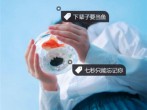
初一旅游英语作文过去式【一】
People hold different views about X. Some people are of the opinionthat
观点1. While others point out that
观点2. As far as I am concerned, the former/latter opinion holds moreweight. For one thing,
论据1. For another,
论据2. Last but not the least,
论据3. To conclude, 总结观点. As a college student, I am supposed to 表决心。或From above, we can predict that预测。
初一旅游英语作文过去式【二】
Jane Eyre is a first-person narrative of the title character, a small, plain-faced, intelligent and honest English orphan. The novel goes through five distinct stages: Jane's childhood at Gateshead, where she is abused by her aunt and cousins; her education at Lowood School, where she acquires friends and role models but also suffers privations; her time as the governess of Thornfield Manor, where she falls in love with her Byronic employer, Edward Rochester; her time with the Rivers family at Marsh's End (or Moor House and Morton, where her cold clergyman-cousin St John Rivers proposes to her; and her reunion with and marriage to her beloved Rochester at his house of Ferndean. Partly autobiographical, the novel abounds with social criticism and sinister gothic elements.
初一旅游英语作文过去式【三】
i read the book written by luxun .it is called zhaohuaxishi. it includes 10 short articles about the writers stories .they are based on his own experience , when i read this book ,i feel very happy to see luxuns childhood. it was diffrent from ours,so we may find it intersting and exciting. luxuns langange is very great but maybe difficult to understand . but through his words ,we can find his happiness in his heart .
初一旅游英语作文过去式【四】
这样的教学方式学生特别喜欢,因为学生不再像以前那样被动地听和记,学习环境活跃而轻松,学生之间、师生之间的交流和互动大大增强,锻炼了学生的听说读写的能力,而且学生还会从中思考语言的准确性、肢体语言的得体性,从而真正营造一个英式课堂。“学”是为了“用”,活动式小学英语教学课堂就做到了这一点,把学到的英语知识和技能运用到活动中去,达到了活学活用的教学目的。另外,活动式教学方式更有利于培养学生的自信,运用英语来做一些力所能及的事情,取得一点儿小成绩,从而进一步提升学习兴趣。在活动中,学生一定得与不同的人交往,这也培养了学生思考、决定、再反思的处理问题的'能力,培养了其合作能力。
初一旅游英语作文过去式【五】
(1)摘要式:即将书中或文章中一些重要观点、精彩警辟语句,有用数据和材料摘抄下来,目的是积累各种资料,为科研、教学、学习和工作作好准备。可按原书或原文系统摘录;也可摘录重要论点和段落;还可摘录重要数字。
(2)评注式:评注式笔记不单摘录,还要写出自己对这些要点的看法和评价。常用方法有书头批注。即在书中重要地方用笔打上符号或在空白处加批注、折页作记号;也可用提纲方法把书和文章论点或主要论据扼要记叙下来;还可用摘要式综合全文要点、记下主要内容;读完全书或全文对得失加以评论也是一种方法。
(3)心得式:即读后感。是读书或读文章后写出的自己的认识、感想、体会和启发。常用方法有:札记,也叫札记,是摘记要点与心得结合的产物;心得,也叫读后感。将读书体会、感想、收获写出来;综合观点、见解,提出自己看法并记录下来,也是很好的读书方法。
(4)记载式:1)笔记本。成册笔记本可用来抄原文、写提纲、记心得、写综述。长处是便于保存,缺点是不便分类,但可按类单独成册。 2)活页本。可用来记各种各样笔记。便于分类,节约纸张和日后查阅。 3)卡片。好处便于分类,可按目排列,便于灵活调动又节省纸张,但篇幅小,内容不宜长。 4)剪报。把报纸和有用资料剪下来,长文章可贴在笔记本或活页本上,短小材料可贴在卡片上。剪报材料可加评注,也可分类张贴,要注明出处,以便使用。 5)全文复印。重要读书材料,为保持完整性,可全文复印编目分类留用。

















